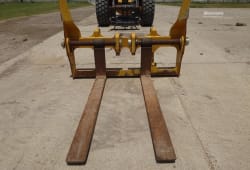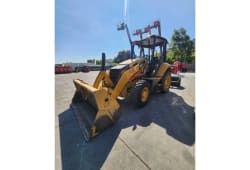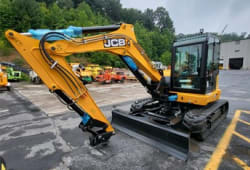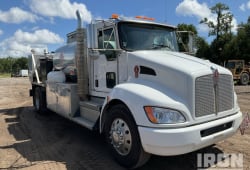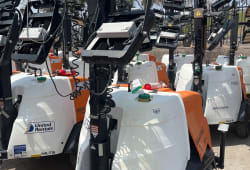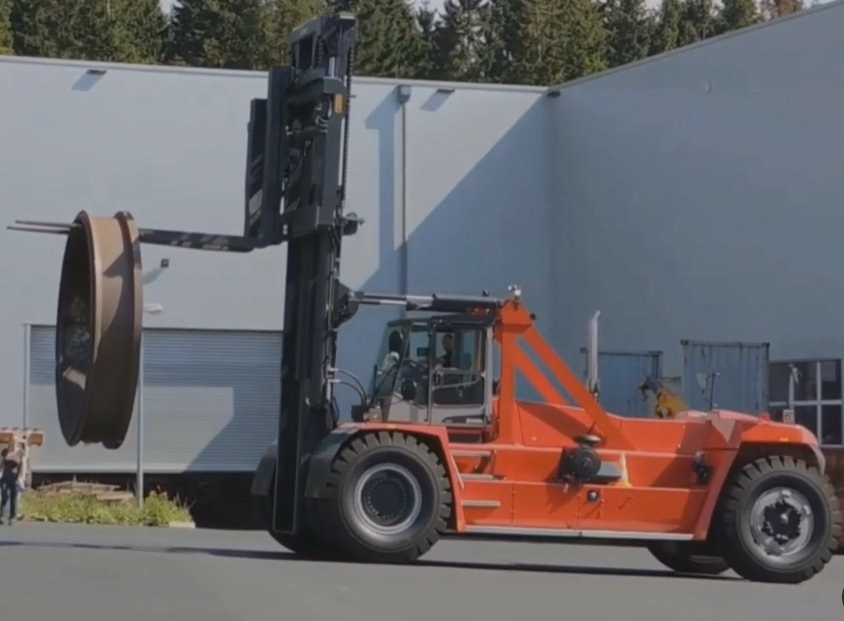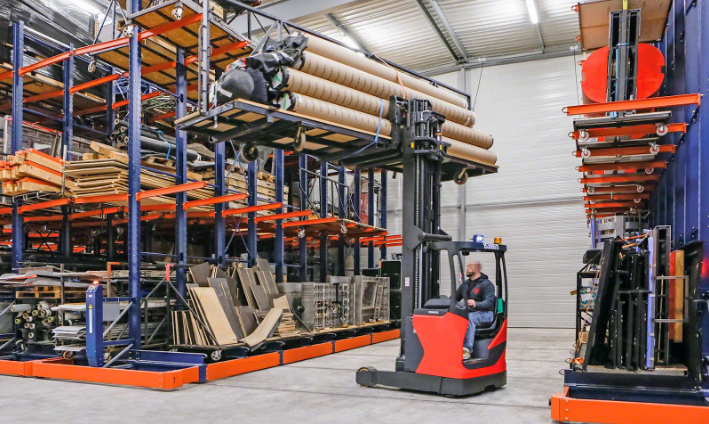Quick Guide to Forklifts: Autonomous Forklift
5 Min read
)
September 17, 2023
In the rapidly evolving logistics and material handling landscape, autonomous forklifts have emerged as transformative pioneers.
Also known as robotic lift trucks, automated forklifts, or even robotic tow tractors, these sophisticated machines reshape how goods are moved, stored, and organized within warehouses and distribution centers.
This comprehensive article will explore the world of autonomous forklifts, delving into what they are, how they are utilized in existing operations, the intricate components that power their operations, and their advantages and disadvantages.
We'll also explore the considerations needed when choosing between used and new units and their profound impact on modern-day industrial operations.
What Are Automated Forklifts?
:format(webp))
Automated lift trucks represent a subset of computerized forklifts, meticulously engineered to operate independently without direct human intervention. They go by various names, including robotic lift trucks, the robotic tow tractor, and the pantograph robotic reach truck.
These robotic lift trucks are equipped with sensors, cameras, and advanced navigation systems that empower them to navigate through the labyrinthine environments of warehouses, load and transport materials, and perform various tasks autonomously.
This allows you to reduce operating costs and eliminate the need for a lift truck operator.
Programmed to execute specific instructions precisely, they are engineered to operate efficiently in controlled environments, revolutionizing the landscape of logistics and material handling operations.
How Autonomous Forklifts Are Used
The versatility of the automated forklift finds application across various sectors within warehouse and distribution center settings. They are particularly adept at handling repetitive tasks, optimizing workflow, and mitigating labor costs. Some automated guided forklifts with everyday use cases include:
Goods Transportation: These robots excel at efficiently moving pallets and containers of goods from one location to another within a facility, ensuring a seamless material flow.
Loading and Unloading: Autonomous forklifts are deployed for loading and unloading trucks, streamlining the process and diminishing the need for a lift truck operator.
:format(webp))
Picking and Stacking: The robotic tow tractor offers proficiency in picking products from shelves and meticulously stacking them on pallets or racks, maximizing vertical storage space.
Replenishment: These robotic forklifts can autonomously replenish inventory by transferring goods from storage areas to picking locations, ensuring a consistent supply of products.
Inventory Management: Autonomous forklifts play a pivotal role in inventory management by conducting routine stock counts and updating inventory data with unwavering precision.
:format(webp))
Components of Autonomous Forklifts
The intricate technology that empowers autonomous forklifts to perform their duties includes:
Sensors and Cameras: These devices serve as the eyes and ears of the autonomous forklift, providing real-time data about their surroundings, allowing them to navigate through spaces and adroitly avoiding obstacles.
:format(webp))
Navigation Systems: Autonomous forklifts leverage sophisticated navigation algorithms and software to meticulously plan optimal routes, make astute decisions based on their environment, and execute tasks with precision.
Lifting Mechanism: The lifting mechanism is the quintessential component that allows the forklift to raise, lower, and transport loads with consummate precision and control.
Control System: The control system is the nerve center behind the operation, deftly coordinating the autonomous forklift's movements and ensuring they follow their programmed instructions with unerring accuracy.
Advantages and Disadvantages of Autonomous Forklifts
Advantages:
Enhanced Efficiency: Autonomous forklifts operate tirelessly, 24/7, augmenting overall productivity by eliminating the need for breaks or shift changes.
Reduced Labor Costs: The utilization of autonomous forklifts minimizes reliance on human operators, resulting in substantial cost savings in labor expenses.
Safety: Equipped with advanced safety features, these robots significantly reduce the risk of workplace accidents and injuries.
:format(webp))
4. Precision: They perform repetitive tasks with unparalleled accuracy, ensuring consistent quality in material handling.
5. Optimized Space Utilization: Autonomous forklifts can maximize vertical storage space, making the most of available warehouse real estate.
6. Consistent Workflow: These robots maintain a consistent workflow, unaffected by fatigue or human error, ensuring uninterrupted operations. This helps to reduce lift truck operator turnover, which is essential considering current labor shortages.
Disadvantages:
High Initial Investment: The acquisition and implementation of autonomous forklifts necessitate a significant upfront investment in technology and infrastructure.
Maintenance and Repairs: These complex machines may require specialized maintenance and repair services, which can be costly.
:format(webp))
3. Technical Complexity: Operating and maintaining autonomous forklifts may necessitate a skilled workforce with technical expertise.
4. Limited Adaptability: While efficient in controlled environments, autonomous forklifts may not be as adaptable to unforeseen changes or irregular tasks as human operators.
Used vs. New Autonomous Forklifts
When contemplating the adoption of autonomous forklifts, businesses have the option to choose between used and new units. Used units may offer cost savings but have a shorter lifespan and potential maintenance issues.
:format(webp))
If you choose to go with used automated forklifts, support robotic solutions locally. This will further support your local economy and combat ongoing labor challenges. It will also allow you to look at the automated forklift before purchasing it.
On the other hand, new units provide the latest technology and reliability but come with a higher price tag. The choice between used and new autonomous forklifts depends on specific business needs, budget considerations, and the expected lifespan of the machines.
Conclusion
:format(webp))
Autonomous forklifts have emerged as indispensable technological assets in the ever-advancing landscape of logistics and material handling. These robotic lift trucks, capable of executing tasks precisely and efficiently, reshape how materials are handled within warehouses and distribution centers.
While their initial investment and maintenance requirements may pose challenges, the numerous advantages they bring to the table, such as enhanced productivity, cost savings, and improved safety, make them an invaluable addition to modern industrial operations.
As technology evolves, autonomous forklifts are poised to be pivotal in optimizing warehouse operations, increasing efficiency, and ensuring businesses remain competitive in a rapidly changing marketplace.
The ability to navigate, lift, and transport materials with finesse and autonomy represents the future of logistics and material handling, promising more automated solutions for a streamlined, efficient, and innovative industrial landscape.



